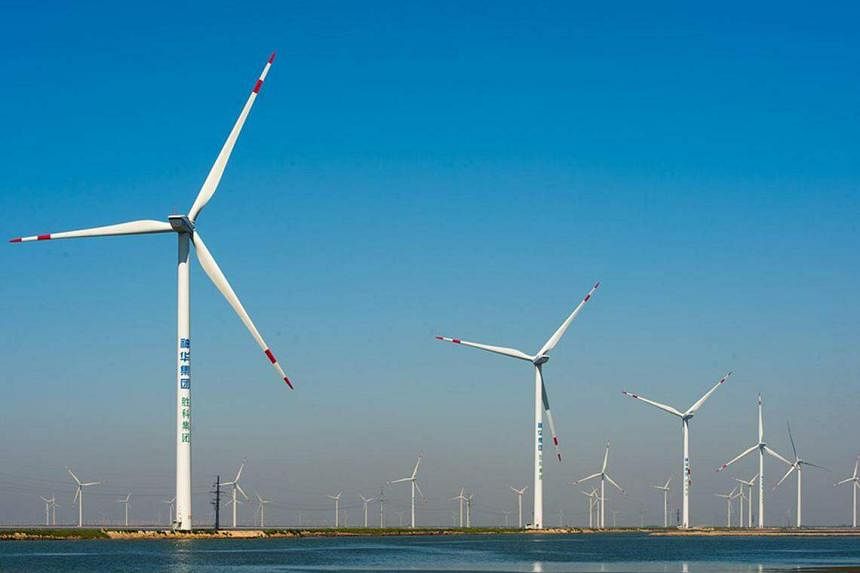BEIJING – China is building the world’s largest commercial floating offshore wind farm off the coast of Hainan, in what analysts see as a sign that the growth of renewable energy is gathering momentum.
The wind power project, which has a capacity of 1GW, is being built by state-owned firm PowerChina, and will generate about 11 times more power than the current largest floating wind farm in Norway.
It will be constructed in two phases – the first, with 200MW capacity, will be built by 2025, with the remaining 800MW completed by 2027, the official China News Agency reported at the end of December.
Unlike conventional offshore wind farms, which require long towers for turbines to be anchored to the seabed, this floating wind farm will have turbines floating on the ocean surface.
This means the turbines can be situated farther out to sea, where wind speeds are greater.
China’s offshore wind energy industry is expanding very quickly, and it will run out of space near shore at some point, said Mr Cosimo Ries, a renewable energy analyst at Beijing-based consultancy firm Trivium.
“So it is in a way inevitable that floating offshore wind takes off,” he said, adding that these projects promise great potential for the expansion of wind power.
But Mr Ries also pointed out that because of the technological and engineering challenges involved in building floating wind turbines, the electricity produced could cost up to four times more compared with traditional wind projects fixed to the seafloor.
This is where mega projects such as the one PowerChina is building come in, as they help develop the expertise and scale needed to drive costs down, he said.
Added Mr Ries: “Projects like these are absolutely crucial to determine whether that can happen – how quickly costs can be driven down.”
Analysts say this is also a clear signal that the growth of renewable energy such as wind and solar power is accelerating in China.
The National Energy Administration has set a target to install around 65GW of wind power and 98GW of solar power in 2023, or just over 160GW combined, according to figures released during its annual work conference on Dec 30.
If it hits this goal, it would amount to a 35 per cent increase over 2022’s target of 120GW wind and solar power.
China has set a goal to reach 1,200GW of total installed capacity of wind and solar power by 2030.
Mr Jin Boyang, a senior analyst at data provider Refinitiv, said 2023’s targets show that China’s energy transition is on track, noting that cumulative capacity for solar and wind power will reach 920GW this year – only 280GW short of the 2030 target.
“If China maintains this same pace, it is highly likely that the goal set for 2030 will be reached before 2025,” he said.
Beijing’s exit from zero-Covid will also provide a boost, as many renewable projects had been postponed because of outbreaks in 2022, he added.
While the energy administration has said it will continue to lean on coal for energy security, with new coal power units being put into operation, Mr Jin said the overall percentage of renewable energy will still continue to grow.
“We need to see the bigger picture here: As long as the share of renewable installation in China’s power mix is consistently increasing, even if there is short-term disruption, the course towards a greener energy structure for China will not be changed,” he said.


